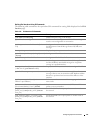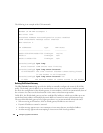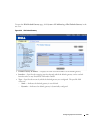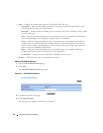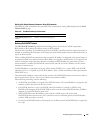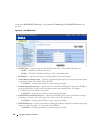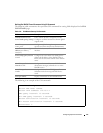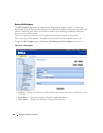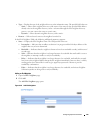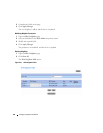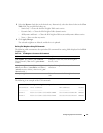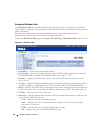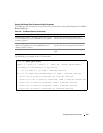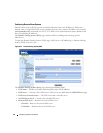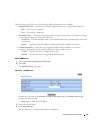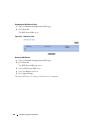
Configuring System Information 149
•
Ty p e
— Displays the type of the neighbor discovery cache information entry. The possible field values are:
–
Static
— Shows static neighbor discovery cache entries. If an entry for the specified IPv6 address
already exists in the neighbor discovery cache—as learned through the IPv6 neighbor discovery
process—you can convert the entry to a static entry.
–
Dynamic
— Shows dynamic neighbor discovery cache entries.
•
Remove
— When selected, removes the neighbor from the list.
In the IPv6 Neighbors Table, the following additional parameter appears:
•
State
— Displays the IPv6 Neighbor status. The field possible values are:
•
Incomplete
— Indicates that an address resolution is in progress and the link-layer address of the
neighbor has not yet been determined.
•
Reachable
— Indicates that the neighbor is known to have been reachable recently (within tens of
seconds ago).
•
Stale
— Indicates that the neighbor is no longer known to be reachable but until traffic is sent to
the neighbor, no attempt is made to verify its reachability.
–
Delay
— Indicates that the neighbor is no longer known to be reachable, and traffic has recently
been sent to the neighbor. Rather than probe the neighbor immediately, however, there is a delay
sending probes for a short while in order to give upper-layer protocols a chance to provide
reachability confirmation.
–
Probe
— Indicates that the neighbor is no longer known to be reachable, and unicast Neighbor
Solicitation probes are being sent to verify reachability.
Adding an IPv6 Neighbor
1
Open the
IPv6 Neighbors
page.
2
Click
Add
.
The
Add IPv6 Neighbors
page opens.
Figure 6-40. Add IPv6 Neighbors



